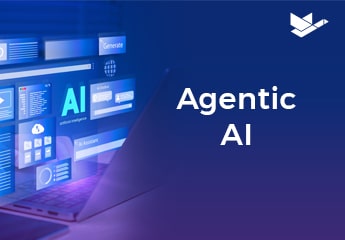
The need to innovate in the insurance industry couldn’t be greater, and carriers are looking to do a lot of different things to keep up in a crowded marketplace. Whether they’re trying to diversify their line of business mix or are hoping to use AI and machine learning during the claims process, many carriers are finding that they can’t keep up with the pace of change. Unfortunately, a lot of that stems from the obstacles that come with legacy systems that are difficult to upgrade, maintain, integrate with, and to support your end users with.
This has given rise to the rapid development and utilization of pre-integrated insurance software and SaaS insurance offerings that equip carriers with all of the advanced functionality they need, while also preparing them to grow into the future.
Pre-Integrated Software & Insurance SaaS vs Legacy Builds
It seems like ancient history, but not long ago technologists used to debate “build versus buy” as part of their due diligence. Maybe because some people just like to argue, the more recent quandary has been whether to go with “best-in-class” versus pre-integrated insurance software suites or SaaS solutions.
Overwhelmingly, those packaged applications are winning out.
The reason behind this trend is pretty straightforward: replacing a policy, billing, claims, or rating system is very likely to reveal the limitations of older components and the fragility of the integrations between them. With that in mind, it’s often easier to upgrade with multiple pre-integrated components, which supports the speed-to-market imperative that I’ve been addressing.
This same logic is now being applied to SaaS delivery. Generally speaking, the appeal of SaaS is that you can get a truly end-to-end solution, including infrastructure, services, support, and constant upgrades, assuming you shop wisely. Plus, your risk exposure is limited by working with fewer vendors, and implementations are much shorter because your technology portfolio comes pre-integrated.
Benefits of Insurance SaaS Solutions
Upgrade to an Evergreen Solution
With core, on-premises systems, technologists knew that every couple of years there would be a mandatory major project to upgrade to the latest system. It required downtime, finding another partner, and allocating internal resources to the upgrade. This limits future planning and the technology team’s ability to focus on anything other than these cyclical upgrades.
With insurance SaaS and pre-packaged software, carriers are getting the latest capabilities and updates as they roll out, ensuring that they always have the most current technology in a fraction of the time. This allows CIOs, technology leaders, and their teams to focus on bigger-picture projects and innovative new products.
Gain Continuous Speed to Market
When it comes to digital communications, data-driven decision making, and predictive analytics, time spent is money lost, so the opportunity to benefit in months, not years, is a pretty compelling argument in favor of packaged solutions and SaaS delivery methods.
But wait! There’s more. By reducing the need and expense associated with maintenance, integrations, and upgrades, even small- and medium-size carriers can begin to benefit from the same cost structures and advanced technology — including analytics, computing, database, mobile, networking, security, storage, and web — as their larger competitors. Simply put, packaged solutions and SaaS can help you redirect and concentrate your resources on business challenges, like offering a high-quality customer experience rather than running a data center.
Roadblocks to Insurance SaaS Adoption
On the business side of insurance operations, change can be hard. And just taking old processes and transferring them to new technology won’t extract the full value of that new technology. To drive user adoption and ensure that carriers get the most out of insurance SaaS software, they should seek out opportunities to demonstrate the key value of these solutions.
Features that will help employees do their jobs, like additional data integrations that get down to zero data entry fields, or fraud analytics that enable straight-through processing and lower-touch processes, will speed up the adoption process. This goes for the IT team as well — they may view SaaS as a tool intended to replace them since it doesn’t require break-fixes or hardware maintenance. However, this should be shaped as an opportunity for the technology team to drive innovation in the business and become enablers of change.
How to Prepare for Insurance SaaS Implementation
There two major areas carriers should prep to ensure a smooth insurance SaaS implementation.
- Access Planning
Most carriers have an overall enterprise architecture that new SaaS programs will be integrated with, but there are many self-assessment questions that must be answered to accurately plan for this transition. How do they want their current system to interact with a SaaS platform? Do they want to use an express route for connectivity? Will they be using some type of IPsec tunnel? Getting these details defined prior to implementation makes the migration a much smoother process. - Integrations
Carriers really need to take a look at their integration inventory and see if they’re still providing the value they need. If not, carriers must determine if there is a third-party provider or potentially a new service that will give them more functionality and information to be able to service the end user more efficiently.
If you’ve been postponing your digital transformation, or are concerned about costs, integrating emerging and rapidly changing technology, or the dearth of local talent, your wait has finally paid off.





